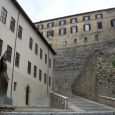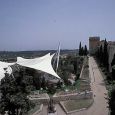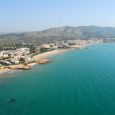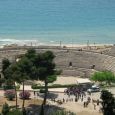Tarragona
Advertisement
By Air
The closest you can fly to Tarragona is into Reus Airport (REU), 13kms away. It is a small airport that handles more than a million passengers per year, many of whom arrive on flights operated by low-cost carriers. The other option is to fly into Barcelona and take the direct bus from the airport or the train into Barcelona and then switch rail lines to Tarragona.
Facilities at Reus Airport are limited, as the airport is small and located only three kilometres from the centre of town. The airport houses two cafeterias and two shops, and banking services are limited to a single ATM. The plus side to the small airport is that parking here is free.
Travel options to Tarragona are easy, but limited to bus, taxi or hire car. The taxi rank is located just outside the terminal, near the Arrivals area, and buses depart from the airport to Tarragona nine times daily. Car hire is available from desks located inside the terminal, but it is advisable to secure a vehicle for yourself in advance by booking online.
By Rail
Tarragona is connected to the rest of Spain by one of the nations main railway lines which runs between Barcelona and Alicante, and another line which connects Barcelona and Madrid. Each day, 55 trains make the run between Tarragona and Barcelona, with a journey time of about an hour. Five trains run daily from Madrid (4 hours) and there are also frequent arrivals from Valencia (3 hours). The train station in Tarragona is in Plaza Pedrera, near the port and the main street, Rambla Nova. Up the hill along this street, you will find many hotels. During the high season, be sure to book your tickets days in advance.
By Bus
There are 15 bus lines serving Tarragona, with services operating more frequently and connections to more cities than those served by the train lines. The major bus company, Plana, has buses that depart from Barcelona for Tarragona from the Maria Cristina underground station. The companies Eurolines and Alsa run trips between many parts of Western Europe, Morocco and several Eastern European countries. The bus station is at a public square called Plaa Imperial Tarraco.
For travel within the city, local public buses, run by EMT, provide full services to all points in town. Tickets may be purchased at tobacco shops for either single trips or as a 10-ride pass.
By Car
From Barcelona, take the A-2 highway southwest, connecting with the A-7 and then the N-340. The route is along a fast toll road and the way to Tarragona is clearly posted.
Within the city, car hire may prove an attractive option for people who want to explore the city, or get out to other areas in the region. Driving around the town is fairly easy, although the roads can get congested in rush hours.
Cyclopean Walls
From the north end of the Rambla Vella the Vía del Imperio runs east to the (Catalan Portal de Roser), which dates from the sixth or fifth century B.C. This is the starting-point of the Paseo Arqueológico round the massive ancient cyclopean walls enclosing the highest part of the town, which are preserved almost without interruption for a length of 1,000m/1,100yd, standing to heights of between 3m/10ft and 10m/35ft. The lower part of the walls - the remains of the Iberian town walls of the sixth century B.C. - is built of huge irregularly shaped blocks up to 4m/13ft long. Above this lie the Roman walls, built by the Scipios from 218 B.C. onwards; native workmen were employed in the construction, and many of the stones bear Iberian masons' marks. Higher still are the remains of the Augustan walls. The six surviving gates all date from the earliest period.
Passeig Arqueologic
In the old quarter known as Part Alta, the Passeig Arqueologic is an eight kilometre long promenade that weaves around the original Roman walls of the city. The older ramparts were built in the 2nd century BC and stand 12 metres tall, while on the opposite side, the columns bear evidence of reinforcing done by the British in the 18th century, during the War of Spanish Succession. From the path, you can take in sweeping views of the plains and the sea.
Ebro Delta
After passing the fishing villages of L'Ametlla de Mar and Ampolla, both now developing holiday resorts, the road follows the west side of the Ebro delta. At Amposta-Aldea C 235 goes off on the right to Tortosa, 14km/9mi west. Soon afterwards N 340 crosses the Ebro and comes to Amposta, a little town noted for its rice. The Ebro delta in which it lies, a marshy area with countless little waterways and pools, is well suited for the growing of rice. The river has two mouths, the Gola del Norte and Gola del Sur, with the island of Buda between them. The whole delta is a paradize for birds, the haunt of many different species.
Roman Amphitheatre (Amfiteatre Rom)
Set in a cliff over the beach, this ancient amphitheatre was the site where gladiators and wild beasts fought until death for the amusement of the crowds, as well as being the site of the grisly death of three Christian martyrs in AD 259. A basilica was erected to honour them in the 6th century.
Cathedral
The Cathedral, mainly built in the 12th and 13th centuries on a site which had previously been occupied by a Roman temple of Jupiter and later a Moorish mosque, is one of the most splendid examples in Spain of the transition from Romanesque to Gothic. On the west front (begun 1278; upper part unfinished) is a deep Gothic doorway with rich sculptural decoration, flanked by massive buttresses, above which is a magnificent rose window. The Romanesque side doorways are also very fine. The oldest part of the
Cathedral is the fortress-like apse.
Information not available






